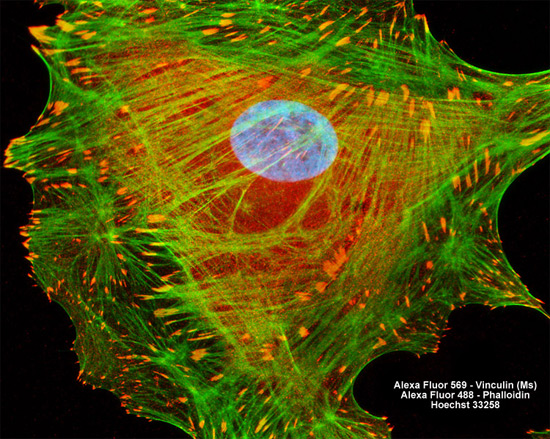The BPAE cell line tests positive for bovine diarrhea virus, a major bovine viral pathogen that causes a broad array of clinical syndromes resulting in significant losses in the beef industry each year. BPAE cells are also positive for angiotensin converting enzyme (ACE), an enzyme that is intricately involved in the maintenance of blood pressure and volume. Consequently, BPAE cells are frequently utilized in studies of atherosclerosis, coronary heart disease, and hypertension.
Bovine Pulmonary Artery Endothelial Cells

The adherent culture of bovine artery cells featured in the digital above was immunofluorescently labeled with anti-vinculin mouse monoclonal primary antibodies followed by goat anti-mouse IgG secondary antibodies conjugated to Alexa Fluor 569. In addition, the specimen was simultaneously stained for DNA with the ultraviolet-absorbing probe Hoechst 33258, and for the cytoskeletal filamentous actin network with Alexa Fluor 488 conjugated to phalloidin. Images were recorded in grayscale with a Hamamatsu ORCA AG camera system coupled to a ZEISS Axio Imager microscope equipped with bandpass emission fluorescence filter optical blocks provided by Chroma and Semrock. During the processing stage, individual image channels were pseudocolored with RGB values corresponding to each of the fluorophore emission spectral profiles.



